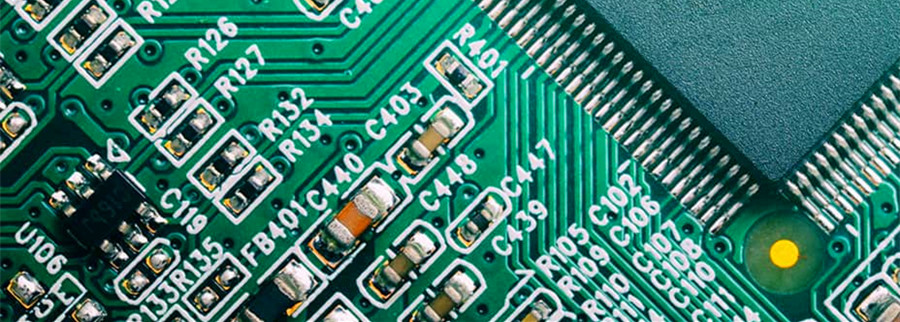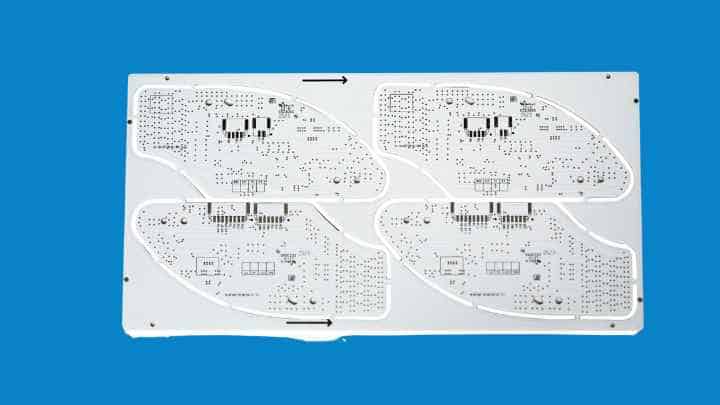Single PCB Prototype Services Swift Solutions for Quick Turnarounds
Introduction of Single PCB Prototype Services
In the fast-evolving landscape of electronics manufacturing, the role of single PCB prototype services is often overshadowed by large-scale production narratives. Yet, this initial step in the PCB development process is a cornerstone of innovation and efficiency. In this digital era, where the pace of technological advancement is relentless, the significance of prototyping, particularly for single PCBs, cannot be overstated. It represents more than just a preliminary stage; it is a critical juncture where ideas transform into tangible, testable products. This article delves into the nuanced world of single PCB prototyping, unraveling its complexities and strategic importance in a market driven by precision and rapid development.
Shifting the focus from bulk production to the nuanced art of single PCB prototyping unveils a myriad of considerations that go beyond basic manufacturing. It’s a realm where meticulous design meets practical application, and where every minute detail can have far-reaching implications on functionality and scalability. This article aims to illuminate these often-underappreciated aspects, offering a comprehensive understanding of single PCB prototyping. We will explore its cost dynamics, the delicate balance between customization and standardization, and the pivotal role it plays in guiding products from conception to mass production. By doing so, we aim to provide valuable insights for professionals and businesses in the electronic sector who are navigating the intricate path from prototype to product.

Understanding Single PCB Prototyping
Overview of Single PCB Prototype Service
The concept of single PCB prototyping is more than just a preparatory step in the production of electronic components. It’s a sophisticated process that blends innovation with practical application, often serving as the backbone of customized electronic solutions. In this context, single PCB prototypes are not merely physical entities; they represent the convergence of design theory and real-world functionality. This critical phase in electronics manufacturing involves several nuanced elements:
- Design Validation: The prototype acts as a test bed for validating the PCB design, ensuring that it meets the specified requirements and functions as intended.
- Material and Component Testing: Prototyping offers an opportunity to test different materials and components, which can significantly impact the performance and durability of the PCB.
- Process Refinement: It allows for the refinement of manufacturing processes, leading to improved efficiency and reduced costs in mass production.
Advantages of PCB Prototyping Before Mass Production
Before diving into large-scale production, the prototyping phase offers several strategic advantages:
- Risk Mitigation: Prototyping identifies potential design and manufacturing issues early, reducing the risk of costly errors in later stages.
- Cost-Effective Design Changes: Modifications are much more manageable and less expensive during the prototyping phase than after mass production has begun.
- Enhanced Quality Control: Each prototype undergoes rigorous testing, ensuring that the final product meets the highest quality standards.
A quote by a renowned PCB designer, Dr. John Goodenough, encapsulates this: “In the realm of PCB manufacturing, the prototype is not merely a test piece; it’s the harbinger of reliability and innovation.”
This phase is also where creativity meets practicality. Engineers and designers can experiment with different layouts, materials, and components to achieve optimal performance. The result? A single PCB prototype that not only functions efficiently but also paves the way for a smooth transition to high-volume manufacturing.
Cost Analysis of Single PCB Prototyping
Factors Influencing the Cost
When delving into the cost dynamics of single PCB prototyping, it’s crucial to understand the myriad of factors that play a pivotal role. Each aspect contributes to the final PCB manufacturing cost, making it a multifaceted analysis. Key factors include:
- Design Complexity: More intricate designs with higher density of components or specialized materials can significantly increase costs.
- Material Selection: The type of substrate used, along with the quality of the conductive materials, impacts the price. High-performance PCB materials like high-frequency laminates come at a premium.
- Prototype Size and Layers: The physical size of the PCB and the number of layers also contribute to the cost. Multilayer PCBs, for instance, are more expensive to produce than single-layer boards.
- Surface Finish and Solder Mask: Options like gold plating or specialized solder masks add to the cost due to the materials used and additional processing steps.
- Turnaround Time: Expedited prototyping services can increase costs due to the need for faster processing and potential overtime labor.
Estimating Your Single PCB Prototype Cost
To provide a clearer picture of the cost estimation process, let’s consider a hypothetical scenario. For a standard single PCB prototype measuring 10×10 cm, with a standard FR4 material, double-sided copper layer, and a typical lead time of two weeks, the cost can be broken down as follows:
| Component | Cost Factor | Estimated Cost |
|---|---|---|
| Base Material | FR4 material | $5 |
| Design Complexity | Moderate | $10 |
| Layers | Double-sided | $15 |
| Surface Finish | Standard Solder | $3 |
| Turnaround Time | Standard (2 weeks) | No additional cost |
| Total Estimated Cost | $33 | |
In summary, the cost of single PCB prototyping is influenced by various factors, each playing a significant role in the final price. Understanding these factors is crucial for businesses and professionals in the electronics industry to make informed decisions and manage their prototyping budgets effectively. The introduction of quick quote systems has further revolutionized this process, offering immediate, customized cost assessments.
Customization and Flexibility in Single PCB Prototyping
Tailoring to Specific PCB Needs
In the realm of single PCB prototyping, customization stands as a testament to the technological prowess and client-centric approach of modern PCB manufacturers. This customization goes beyond mere size and shape; it encompasses a myriad of parameters that can be tweaked and fine-tuned to meet the specific demands of various applications. Key aspects of customization include:
- Layer Configuration: Adjusting the number and arrangement of layers to suit signal integrity and power requirements.
- Component Placement and Routing: Optimizing the layout for performance, manufacturability, and thermal management.
- Material Selection: Choosing substrates and copper weights that best fit the operational environment and electrical needs.
This level of customization enables clients to not only realize their precise electronic requirements but also to experiment and innovate, pushing the boundaries of what’s possible in electronics design.
From PCB Prototype to High Volume Production
A critical aspect of single PCB prototyping is its scalability – the ability to transition smoothly from a prototype to full-scale production. This scalability is a crucial factor for clients, as it ensures that the initial design and testing phase is aligned with larger production goals. Factors that contribute to effective scalability include:
- Standardization of Components: Using commonly available components in prototypes ensures ease of sourcing during mass production.
- Design for Manufacturability (DFM): Incorporating DFM principles in the prototyping phase minimizes the need for significant redesigns later.
- Testing and Validation Protocols: Establishing robust testing procedures during prototyping ensures that the design is scalable and reliable.
This section of the article will explore how customization in the prototyping phase influences the scalability to high-volume production. By balancing the unique requirements of a single PCB with the realities of mass production, manufacturers can provide a seamless transition from prototype to large-scale manufacturing, ensuring that the final product is both high-quality and economically viable.
The Role of Quality and Affordability in Single PCB Prototyping
Ensuring PCB Quality Control in Prototyping
In the world of single PCB prototyping, quality is not a mere buzzword; it’s the cornerstone upon which successful products are built. Achieving high-quality standards in single PCBs is a multifaceted process, involving several critical components:
- Precision Engineering: Every aspect of the PCB design must be meticulously crafted to ensure accuracy and functionality.
- Advanced Testing Protocols: Incorporating rigorous testing methods, such as Automated Optical Inspection (AOI) and In-Circuit Testing (ICT), ensures each prototype meets stringent quality benchmarks.
- Material Integrity: Using high-grade materials is essential for the longevity and reliability of PCBs, especially in demanding operational environments.
These quality measures are integral to the development process, ensuring that each prototype not only functions as intended but also lays a solid foundation for future production scalability.
Balancing Cost and Quality
The interplay between cost and quality in single PCB prototyping is a delicate balancing act. While maintaining high-quality standards is non-negotiable, it is equally important to manage costs effectively. This balance can be achieved through several strategies:
- Economies of Scale in Material Procurement: Leveraging bulk purchasing for materials can significantly reduce costs without compromising quality.
- Efficient Design Practices: Optimizing PCB layout for material usage and manufacturing processes can lower costs while maintaining high performance.
- Selective Customization: Focusing customization efforts on critical aspects of the PCB can achieve desired functionalities without incurring unnecessary costs.
This section will further delve into the concept of “Affordable single PCB” by exploring how manufacturers can provide cost-effective solutions without compromising the quality that clients expect. It will shed light on innovative practices and strategic decision-making that enable manufacturers to offer competitively priced prototypes without sacrificing the quality and performance that are crucial in the electronics industry.
Choosing the Right PCB Prototype Partner
Key Considerations in Selecting a Service Provider
Selecting the right partner for single PCB prototyping is a decision that resonates throughout the lifecycle of a product. The choice of a prototyping partner can influence not just the immediate outcome of the prototype, but the long-term success of the entire project. Key considerations include:
- Technical Expertise and Experience: A provider with a proven track record in handling diverse PCB projects can offer invaluable insights and avoid common pitfalls.
- Capacity for Innovation and Customization: The ability to accommodate unique requirements and innovate solutions is crucial, particularly for complex or niche applications.
- Quality Assurance and Certification: Certifications like ISO 9001 or IPC standards are indicators of a commitment to quality. Providers that prioritize quality assurance can ensure that prototypes meet industry standards and client expectations.
- Turnaround Time and Scalability: The ability to deliver prototypes in a timely manner and scale up to mass production is essential for meeting project timelines and market demands.
Long-Term Benefits of the Right Partnership
The benefits of choosing the right PCB prototype partner extend beyond the immediate scope of a single project. They include:
- Consistency in Quality: A reliable partner ensures consistent quality across all prototypes and subsequent production batches, reducing the risk of defects and failures.
- Streamlined Communication and Collaboration: A good working relationship fosters clear communication, making it easier to address issues and make improvements.
- Cost-Effectiveness Over Time: An effective partnership can lead to cost savings through optimized processes, bulk material procurement, and reduced need for redesigns.
- Support for Future Projects: A trusted PCB prototype partner can provide ongoing support, advice, and services for future projects, contributing to long-term business growth and innovation.
The decision to choose a PCB prototype partner is not one to be taken lightly. It requires a comprehensive evaluation of technical capabilities, quality standards, and the ability to meet specific project needs. By selecting a partner that aligns with these criteria, businesses can ensure a smooth prototyping process, high-quality outcomes, and a solid foundation for future projects. This strategic approach to partnership selection is crucial for anyone in the electronic industry looking to innovate, grow, and succeed in a competitive market.
Conclusion
In the intricate tapestry of electronics manufacturing, single PCB prototyping emerges not just as a preliminary step, but as a critical component in the lifecycle of product development. This phase of prototyping is where visions are tested, designs are validated, and future production strategies are forged. The journey of a PCB from a mere concept to a fully functional prototype encapsulates a blend of engineering artistry, technological innovation, and strategic foresight. It’s a process that demands precision, creativity, and a deep understanding of both the market’s needs and the technological landscape. For businesses and professionals in the electronics sector, recognizing the value of this stage, and investing in quality prototyping services, is pivotal in ensuring the success of their products.
As we have navigated through the various facets of single PCB prototyping, from cost considerations and customization to quality assurance and the importance of choosing the right manufacturing partner, it becomes clear that these are not just individual elements but interconnected gears in a larger mechanism. The decision-makers in this industry, who are seeking to make a mark with their electronic products, must approach single PCB prototyping with a keen eye for detail and a strategic mindset. In doing so, they not only elevate the standards of their immediate projects but also contribute to the broader narrative of innovation and excellence in the world of electronics manufacturing.



